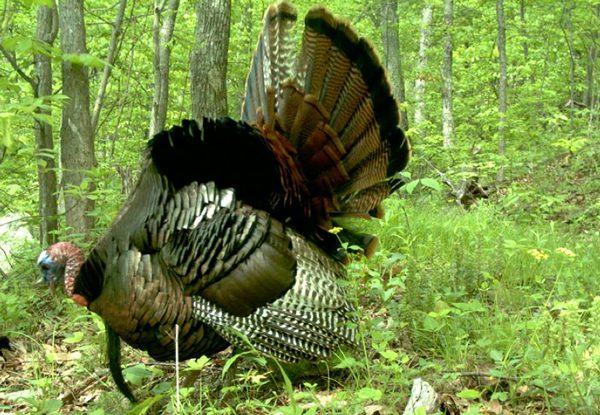Where the wild things are

What kinds of wild animals are in the woods, and what are they up to? The Smithsonian Institution and the North Carolina Museum of Natural Sciences have set up cameras to find out.
| Scroll below for a photo gallery of animal images captured as part of the eMammal project. |
This summer, as part of my internship with the Land Trust for Central North Carolina, I was asked if I wanted to photograph wildlife in the Uwharrie Mountains. Since I dabble a bit in wildlife photography, I jumped at the opportunity. I was told that I would be managing three wildlife cameras over the duration of the summer, and I was expecting to capture incredible photos of animals exhibiting behavior never before seen by science. Well, maybe not that romantic a job description, but the cameras were pretty expensive-looking and so I figured they expected some good results.
My first assignment was to take the cameras out into the Uwharrie National Forest near Badin Lake and place one near a trail, one a little ways back, and then one about 200 meters from the trail. Once placed, these infrared-detecting cameras would remain for three weeks, primed for any warm-blooded creatures that passed in front of them. If an animal did pass within range, the camera would be tripped and take a series of photos.
The cameras use the infrared spectrum of light, so night shots were also possible, rendering a ghostly black and white image of the animal in question. After locating my placement sites using a GPS unit, I set my cameras, stood in front to wave my good-bye, and starting trekking back to my car. I would have to wait almost a month before I could see if anything was captured by my cameras.
All of this is part of an effort organized by the Smithsonian Institution and the North Carolina Museum of Natural Sciences. The program is called eMammal, and at its core, the camera-trapping work is designed as a new monitoring effort to gather information of all kinds about wildlife and their activities in the Southeastern U.S.
The use of automated cameras means it’s a cost-effective way for biologists to conduct monitoring of this sort. Time and resource-strapped biologists can work on other projects while their cameras gather critical data in the field.
Additionally, volunteers did most of the camera set-up, which is an excellent way to encourage citizen science and engage interested local volunteers in the research. Another purpose of the study was to look at how human recreation in various forms affects animal behavior.
Cameras were placed in state parks and national forests with different forms of recreational activities nearby (hunting, hiking, horseback riding, etc.). The study will be able to examine how the presence or absence of such human interaction affects things like the time of day animals are more active.
After three weeks, I returned to my camera sites and removed the precious memory cards. I wanted to see what I had trapped. Maybe a black bear? Turkey family? Perhaps a bobcat on a nocturnal prowl? As it happened, none of my cameras captured any of these. But they did record a number of foxes, squirrels, opossums and deer that were evidently frequent visitors to my camera sites.
I even had a couple of wily coyotes in one nighttime image. Later, I heard other volunteers had captured some of the more glamorous creatures on their cameras, from the black bears to resplendent male turkeys, to elusive bobcats. And while my own cameras may not have gotten them, it was nice to know these animals were still out there.
Maybe I’ll have better luck next camera-trapping season. I was probably just warming up this year.
A special thanks to Arielle Parsons, Research Technician at the N.C. Museum of Natural Sciences in Raleigh, for the invitation and training to participate in the eMammal Research study.
More eMammal photos courtesy of The N.C. Museum of Natural Sciences and eMammal volunteers.
[view:slideshow2=block_1]
Kevin Dick wrote is article while interning for the LandTrust for Centeral North Carolina in 2013. At the time he was a student at Duke University.
Kevin Dick